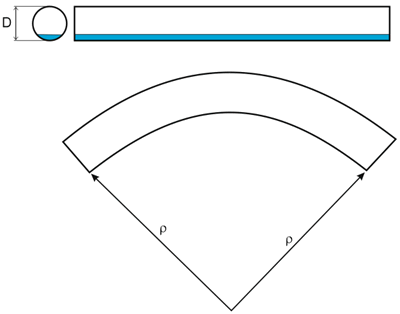

Read about START-PROF pipe stress analysis software
Thermal bowing phenomenon occurs when horizontal pipe is filled partially by hot or cold fluid (LNG). Many thermal bowing occurrences cause unexpected damage to the piping or supporting structure. Since thermal bowing occurs mostly at transient conditions, such as during startup, the bowing phenomenon may go unnoticed until the damages are discovered.
It can also occur when one side of the pipe is exposed to the sun and the other side is in the shade.
This effect take place when the temperature difference between top and bottom of the pipe section is significant. It called thermal gradient. This thermal gradient causes pipe thermal strains which produce pipe curvature called thermal bowing.
Assumptions:
Thermal gradient can be different for each pipe element. And also it can be different in each operation mode.


The pipe curvature due to thermal bowing effect:

r - curvature radius
D - outside diameter of the pipe
a - thermal expansion coefficient at operating temperature
Ttop - temperature at the top of the pipe
Tbottom - temperature at the bottom of the pipe
Thermal gradient (Ttop-Tbottom) should be specified in pipe properties. Thermal boring effect should be switched on in Project Settings.
Bending moment produced in restrained pipe due to thermal bowing effect:

E - pipe elastic modulus at operating temperature
I - moment of inertia
Operating temperature should be equal to (Ttop+Tbottom)/2